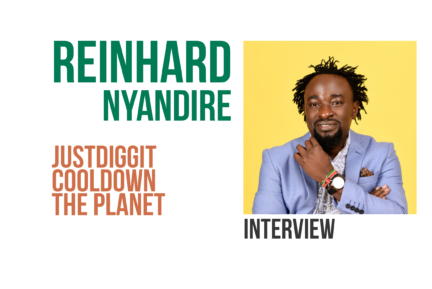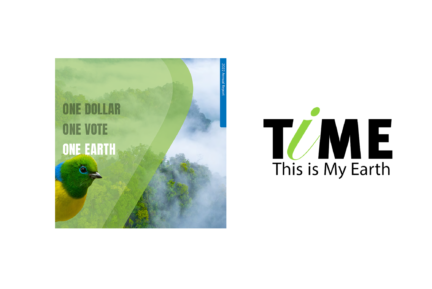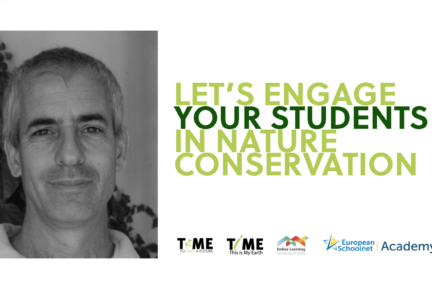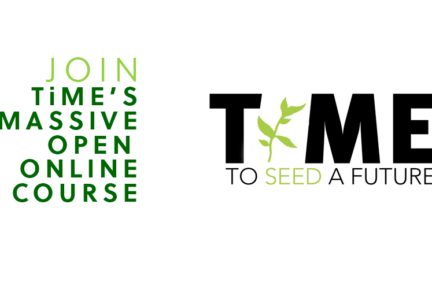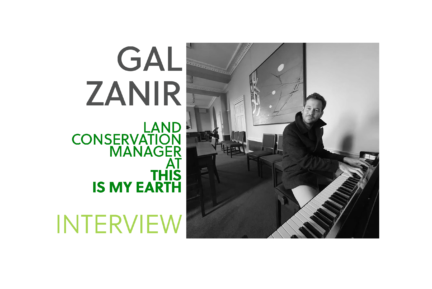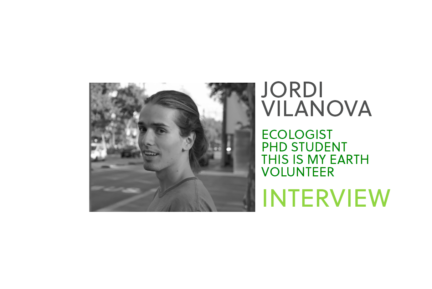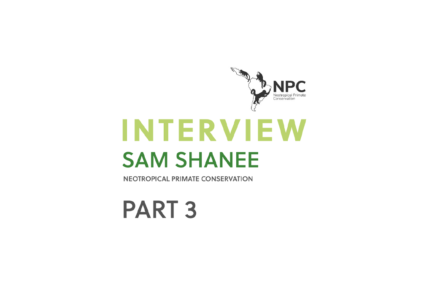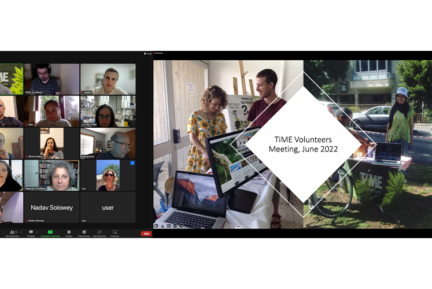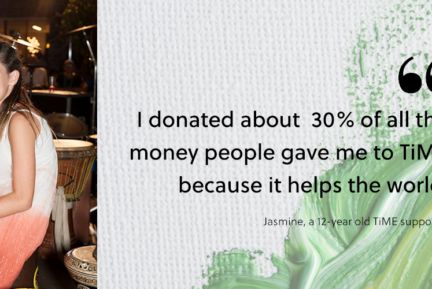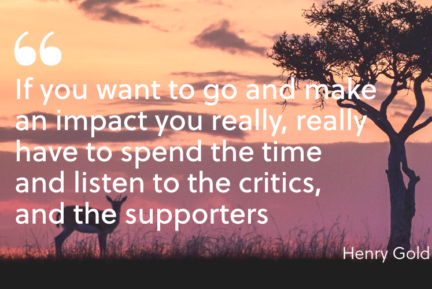It almost goes without saying that conservation and environmental education go hand in hand. TiME is leading actual change through hope
We want to save endangered species and critical hotspots, and we want more people to care, to pay attention. Especially, we want to continue leading this change in future generations.
It is thus not surprising that TiME, in addition to purchasing land in threatened habitats, offers an extensive pedagogical program. But according to Uri Shanas, TiME’s founder, the connection goes much deeper:
“The core idea behind the foundation of TiME is not only to purchase critical hotspots, but to also lead a change of mindset.”
Uri shanas, THis is my Earth’s founder
Leading actual change through hope: Together through TiME
This goes beyond increasing awareness to resisting the despair, anxiety, and helplessness that haunt many environmentalists. That affects young people more than any other group, who worry about their future.
For this reason, we can perhaps define TiME’s goal as leading actual change through hope. We are protecting biodiversity proactively and positively.
TiME allowing each community member to feel the impact of their actions with each land purchase.
Our educational program aims to do just that. We are empowering children to learn about the situation, to have hope, and to act.

“Eco-anxiety” is a relatively new term, but it has been recently widely discussed. It has made headlines in The Guardian, Scientific American, Nature, CNN, and more.
A 2020 survey among English children and adolescent psychiatrists showed that 57.3% of patients are distressed about climate change.
With The Handbook of Climate Psychology defining eco-anxiety as “heightened emotional, mental or somatic distress in response to dangerous changes in the climate system,” you might initially consider the eco-anxiety phenomena to be a good thing: we want people to feel the gravity of the situation and react accordingly.
But eco-anxiety does precisely the opposite. Symptoms include clinical depression and anxiety, post-traumatic stress disorder, panic attacks, suicidal thoughts, and substance misuse. Eco-anxiety is prevalent in our society. The American Psychological Association defined it as one of the top threats to mental health in the 21st century!
This fact is concerning for public health but also for the environmental movement itself. People who experience such effects are more likely to despair and give up.
And yet, as argued by the newspaper New Scientist, “If we label eco-anxiety as an illness, climate denialists have won.”
Thus, the main psychological approach is not to pathologize the symptoms as an individual problem. But to treat it as a justified emotion in response to a real crisis.
The question to be asked is what kind of support can we give people to help them to live with their feelings and express them, without debilitating or anesthetizing them.

TiME is leading actual change through hope
Darrell Erb, a TiME board member and supervisor of the United States’ TiME education project. He points to the fact that from 1970s to today the main goal of most environmental work has been awareness:
“It is amazing that we still struggle for the same thing. Letting people know about the problem is still the main goal.” Perhaps today we can speak of two types of people: those who are still unaware. And those who are aware to the point of clinical anxiety.
TiME appeals to both. For me, monthly donations to TiME helps me not only feel better and know that I am actively supporting conservation, but also gives me the strength to keep doing all the everyday things that can sometimes feel like a drop in the ocean: buying less, driving less, recycling and so forth.
Being part of a community and proactively donating to achieve a real, immediate change relieves the indifference that begins to crawl within me every time I see another picture of a dead whale in the media.
Reading and learning about each hotspot forces us to be active participants. This is precisely what TiME’s educational program aims to give children.

Befriending wildlife
What made you first interested in biodiversity? Was it big words like “ecosystem” and “conservation”? If you are like most people, you likely took an interest in a particular species — perhaps you came across a picture, or visited a zoo, or saw an otter during a school trip, or wrote a presentation for science class. For me, it was the Komodo Dragon about which I learned from a 1990s PC game. These are big lizards that live in Indonesia and are now Endangered; I seem to have considered them real-life dragons, and the fairytale lover in me became passionate about these creatures and their conservation.
For this reason, and based on principles of active learning and constructivist education, TiME’s educational program begins by creating an emotional connection and introducing children to animals, because “We want to encourage the kids to befriend the animal,” says Nurit Hochberg, TiME’s pedagogical program coordinator. We want TiME to keep on leading actual change through hope
TiME’s educational program is leading change through hope and for that, curiosity and emotional connection are the catalysts: children are naturally interested in learning, and encouraging them to study independently about animals, to get to know and befriend them, creates a memorable experience and an emotional connection. The class begins by encouraging children to browse the TiME website and independently learn about a species: where do they live? Why is this the best home for them? Do they live alone or in a pack? Who do they play with? What threatens them? Would you want to save them?
Let’s vote to save the planet
A crucial component of the activity is voting to determine which habitat (or animal, depending on the age group) to save. But the voting can only come after studying the animals and lands proposed for conservation through TiME and sharing the information with the class. Shanas, Erb, and Hochberg all stress how crucial this point is: the children learn the facts and study the options before voting and participating in a positive, educated, and hopeful democratic game.
According to the children’s age and interests, a discussion can develop. “We want to make sure the atmosphere is not accusing to anyone, is not threatening. We want to ask and understand,” says Hochberg. “If this monkey wants to live in the forest, and I want to live in my home, why can’t we find ways for both of us to live where we want, have children, and fulfill our lives? Let’s be kind to everyone, ourselves and the monkeys included. We want to show them how our lives are intertwined with theirs.” With older children, not only does the discussion become more in-depth, but the methods might also change: for example, encouraging leadership development in middle schools, especially among those in more difficult socioeconomic circumstances.
Facing obstacles
Hochberg has been a teacher for many years, and for the past 20, she has worked in professional teaching programs, so she is well versed in school dynamics and politics. “We haven’t encountered children who showed resistance or indifference to the idea of conservation,” she says. Some parents express concern, worrying that their children may be exposed to radical ideas or that they will be horrified. That is one more reason to pursue a positive, proactive approach: no scary images, no apocalyptic mindset. And what about teachers’ objections? “We just need to make sure they don’t stand in the way of the teachers who support our activity,” Hochberg says.
“The human spirit yearns to feel capable,” Hochberg adds. “Once people are given the idea that they can make a difference, but without any sort of pressure or guilt, there is no resistance. Some children want to take it further, others don’t, and that’s fine. We want to give them the awareness of both the problem and possible solutions. From there on, it is their choice.”
When children who want to drive change are given the tools to do so, they also learn leadership and good citizenship in all respects. The role of the adults around them, be it the teacher or the parent, is to help them see what they can do and gently direct them into doable action, avoiding the paralyzing sense of incapability, doom, or helplessness.
A conversation with Darell Erb
“I used to be a baseball coach,” Erb tells me. “The exciting thing about it was showing children how wonderful playing sports can be, and seeing them growing to become coaches themselves. This is what I hope to achieve in schools: giving children a memorable experience, making them feel the importance of the issue, making it local, and hoping that for some, it will be influential enough to carry the torch.”
Erb faces additional challenges that stem from the the identification of the environmental movement with partisan politics in the United States. This means that participating and interested schools are mostly public schools — but that has a significant advantage of approaching a wide array of students.
With respect to schools that have adopted TiME’s program, or are in the process thereof, Erb says: With respect to schools that have adopted TiME’s program, “We have an alternative that appeals mostly to students who did not fit well in the regular education, and the schools we reach have diverse ethnicities and socioeconomic classes.” As a former teacher and principal, Erb is well acquainted with the education system and manages to create connections and continue to expand the network. “We are TiME, we are leading actual change through hope.

TiME’s educational program: leading actual change through hope, and Together through TiME
The TiME pedagogical program operates in many schools, particularly in Israel and in Oregon, USA, and because the information is available online, the numbers are constantly expanding. The program also sparked fertile cooperation between schools in Israel and those in Rwanda and Kenya, who now discuss, learn, and plan eco-activities together.
In addition to bridging geographical distances, TiME reaches out to all ages: a kindergarten in Hadera, Israel, for example, held animal elections. The children campaigned for the conservation of different animals they chose, including cheetahs, butterflies, and zebras. Following a two-week campaign, the children used a ballot box to vote for the animal they wanted to save the most. I don’t know which animal won that campaign, but I do hope that this spirit of creativity, proactivity, motivation, and optimism will help bring forward a future generation that cares deeply about biodiversity and feels hopeful enough to act on it.
“Baseball, like any other sport, involves a lot of ups and downs,” Erb explains. “Playing in front of an audience means that failing is not only failing yourself, but also failing your teammates, the school, sometimes even the state. It teaches to not let even that discourage you from going forward.”
Our hope lies in the new generation
Many of us feel despair in the face of biodiversity loss and climate change, but we can perhaps learn from sports: having failed, no matter how public and crucial the failure was, does not mean we should give up. Like an athlete that lost a game, humanity can still rise from the damage that has already been done, nurture another generation to be hopeful, and act.

Sources
Editorial. “If we label eco-anxiety as an illness, climate denialists have won”. NewScientist. Published October 19, 2019. Accessed November 20, 2022.
Dodds, Joseph. “The psychology of climate anxiety”. BJPsych Bull 45:4 (August 2021): 222-226.
DuLong, Jessica. “Do you have ‘eco-anxiety’? Here’s how to find out”. CNN. Published October 13, 2022. Accessed November 12, 2022. https://edition.cnn.com/2022/08/12/health/eco-anxiety-harmful-for-health-wellness/index.html
Kurth, Charlie and Panu Pihkala. “Eco-anxiety: What it is and why it matters”. Frontiers in Psychology 13 (September 2022).
Wake, Bronwyn. “Understanding eco-anxiety”. Nature Climate Change 12 (2022): 884.
Watts, Jonathan and Denis Campbell. “Half of child psychiatrists surveyed say patients have environment anxiety”. The Guardian. Published November 20, 2020. Accessed November 13, 2022. https://www.theguardian.com/society/2020/nov/20/half-of-child-psychiatrists-surveyed-say-patients-have-environment-anxiety
Whitcomb, Isobel. “Therapists Are Reckoning with Eco-anxiety”. Scientific American. Published April 19, 2021. Accessed November 12, 2022. https://www.scientificamerican.com/article/therapists-are-reckoning-with-eco-anxiety/







